Algorithm Brew
Notes: Game on...on the radio...Fletcher up...bases loaded...two down...top of first...Angels and Blue Jays...1-2 count...ground out, fc...to bottom of first...one down...Vlady Jr. up...woops...off the wall...a double...passed ball, runner to third...fly out, runner couldn't advance, respecting Calhoun's arm...fly out again to Calhoun...to top of second...
quote



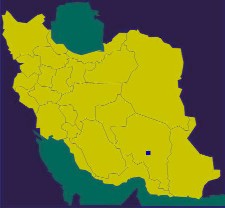
https://en.wikipedia.org/wiki/Jiroft_culture
unquote
Vlady takes away line drive hit by Bour...one down...Lucroy...5 for 53, in competition for catcher with Smith...ground out, 6-3...Regnifo...hit...Lastella up...a double scores Regnifo!...Angels 1-0...
quote
http://www.iranicaonline.org/articles/jiroft-iv-iconography-of-chlorite-artifacts
unquote
passed ball, Lastella to third...wp...Trout up...Troutahere!!...two run shot...Angels 3-0...I don't know if fans around the leagues tune into Angels' games, if not, they are missing a show of hitting!...Ohtani up, and a hit...Upton up...fc...to bottom of second...the Jiroft culture artifacts are a curio...found recently by archaeologists, see wiki's take...and trying to find standardized grain measure containers, I found Jiroft again...earlier I had been to pages noting the clothing iron like block with handle, a lookalike to the famous 'bag' seen in Sumerian reliefs...clearly the two cultures are related...lead off double...my thought the block with handle is an iron for ironing clothes...ancient must have had such!...but I dunno...the cylinder vases are modius like...oh...some curios from a modius Sumerian vases search
quote
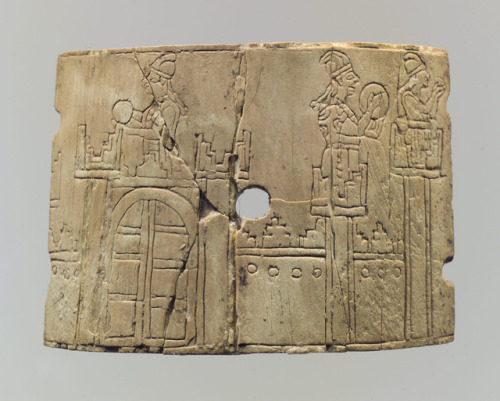
~ Incised cosmetic box fragments with a warrior and four women.
Period: Neo-Assyrian
Date: ca. 9th–8th century B.C.
Geography: Mesopotamia, Nimrud (ancient Kalhu)
Culture: Assyrian
Medium: Ivory

Top fragment of a kudurru with a mushhushshu dragon and divine symbols,
Known as kudurrus or narus, a distinctive group of Babylonian stone monuments were once thought to be boundary markers placed in fields. In fact they are more likely to have been placed in temples, where their contents were preserved and sanctified. The monuments, often made from polished black limestone, are usually uneven and boulder-like in shape. They carry inscriptions describing grants of land, often from the king to a high official. Around the text are placed divine symbols, which act to protect and guarantee the gift.
Kudurrus first appear in the second millennium B.C., during the period of Kassite rule in Babylonia. This fragmentary example dates to the 12th century B.C. The surviving piece, which comes from the top part of the kudurru, shows part of the body of a snake coiling round the upper surface. Below the snake is a mushhushshu, a composite dragon associated with Babylon’s chief deity, Marduk, and his son Nabu. The mushhushshu faces a temple façade or altar on which stands a spade symbol, also associated with Marduk. Below these can be seen a very small section of the original inscription. The other side of the stone shows astral symbols representing the sun (the sun-god Shamash) and Venus (the goddess Ishtar), as well as another stylized temple-façade, this time with a horned crown (a symbol used for the sky-god Anu and the great wind god Enlil). Also visible is part of a goat-fish, associated with the god Ea.

https://ancient-mesopotamia.tumblr.com/?utm_content=buffer824c8&utm_medium=social&utm_source=pinterest.com&utm_campaign=buffer
unquote
Jays wap a three run home run...oh, I'm diverted to Kudurrus!...the cosmetic box has crowstep motif right by the center hole...
quote
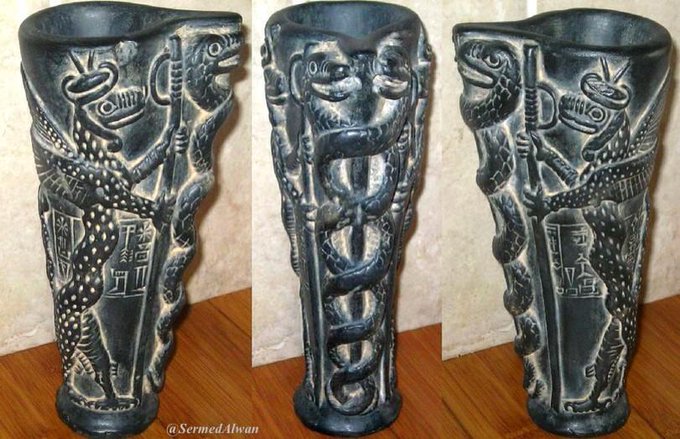
Sumerian vase of Ningizzida, God of healing With the twined serpent Today's Symbol of Medicine Lagash, Iraq 2200 BC pic.twitter.com/z8xGPZgepl
google uses a photo pic algorithm, maybe others too, like pineterest...here's a pinterest page of lookalike vessels...don't know but my efforts but another algo!...hmmmph...Jays made out...to top of fourth...Bour up...
quoteKudurrus first appear in the second millennium B.C., during the period of Kassite rule in Babylonia. This fragmentary example dates to the 12th century B.C. The surviving piece, which comes from the top part of the kudurru, shows part of the body of a snake coiling round the upper surface. Below the snake is a mushhushshu, a composite dragon associated with Babylon’s chief deity, Marduk, and his son Nabu. The mushhushshu faces a temple façade or altar on which stands a spade symbol, also associated with Marduk. Below these can be seen a very small section of the original inscription. The other side of the stone shows astral symbols representing the sun (the sun-god Shamash) and Venus (the goddess Ishtar), as well as another stylized temple-façade, this time with a horned crown (a symbol used for the sky-god Anu and the great wind god Enlil). Also visible is part of a goat-fish, associated with the god Ea.

https://ancient-mesopotamia.tumblr.com/?utm_content=buffer824c8&utm_medium=social&utm_source=pinterest.com&utm_campaign=buffer
unquote
Jays wap a three run home run...oh, I'm diverted to Kudurrus!...the cosmetic box has crowstep motif right by the center hole...
quote

Sumerian vase of Ningizzida, God of healing With the twined serpent Today's Symbol of Medicine Lagash, Iraq 2200 BC pic.twitter.com/z8xGPZgepl
google uses a photo pic algorithm, maybe others too, like pineterest...here's a pinterest page of lookalike vessels...don't know but my efforts but another algo!...hmmmph...Jays made out...to top of fourth...Bour up...
https://www.pinterest.com/pin/647814727628355003/visual-search/?x=15&y=15&w=472&h=554
unquote
so, 'pattern recognition software' has it uses for archaeologists...one could enter search: image stepped fret, and, much as the word search does, bring up lookalike images...the Jiroft vases are made of soapstone, a curio, as soapstone bowls were made here on Catalina Island by the Indians, and in other places in North America...lost track of game...Angels up...Regnifo with double...runners second and third...Lastella up...top of fourth...oh, I forgot to feed Maya, my dog...fc...Trout up...catchers interference!...Lastella stays on first...Trout up...bases loaded...another one...Troutahere!...grand slam!!!...lol...Angels 7-3...Ohtani up...long fly out...one down...Upton up...brb...Fletcher fly out...to bottom of fourth....
quote
The Inuit often used soapstone for traditional carvings. Some Native American tribes and bands make bowls, cooking slabs, and other objects from soapstone; historically, this was particularly common during the Late Archaic archaeological period.[5]
https://en.wikipedia.org/wiki/Soapstone#Historical_uses
unquote
People have quarried soapstone for thousands of years. Native Americans in eastern North America used the soft rock to make bowls, cooking slabs, smoking pipes, and ornaments as early as the Late Archaic Period (3000 to 5000 years ago). [1] Native Americans on the west coast traveled in canoes from the mainland to San Clemente Island (60 miles offshore!) to obtain soapstone for cooking bowls and effigy carving as early as 8000 years ago.
https://geology.com/rocks/soapstone.shtml
unquote
two walks back to back...Heaney doesn't have it tonight...the Jiroft artifacts have a lot of the famous motifs...the twined serpetns, the Master of the Animals, Dragons!, and the 'goblet shape'...many of them are polka dot with holes, the holes held jewels, precious stones--Jiroft style...fly out to Calhoun, one down..."...welp...they leave Heaney in, and, two more runs across...Angels 7-5...ads on, pitching change...
quote

KHAMAT: MODIUS CROWNS
12 Pins
·
A study into the origins of the Modius crown, as worn by the women royals of ancient Egypt, and deities, and similar head gear in traditional Africa.
unquote
that from 'modius sumerian' search, and the pintrest page that search brought up...and there are the feathers, and the modius, which is said to frequent the crowns of Egyptian queens...the feathers morphed from Innana reed house door posts, a thought gone on about back a ways...see crytsalinks 'ateph crown'...Jays make out...to top of fifth...Regnifo waps one, but just long fly out...123...to bottom of fifth...doggone commercials wiped out two Angels at bats...the famous bust of Nefertiti has a modius for crown...or maybe I was just trying to edit, and missed the two at bats!...it's a tangle sometime...one down...Ramirez on mound for Angels...
quote
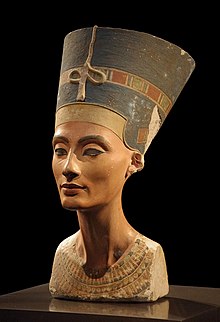
https://en.wikipedia.org/wiki/Nefertiti_Bust
unquote
hmmph...I did find a paper with that search, modius Sumerian, that goes on about ancient measuring systems...but of just the Old World...and they haven't really found a standard vase, or container for grain...
quote
Canonical grain weights as a key to ancient
systems of weights and measures
by Jon Bosak
Last revised 19 April 2014http://www.ibiblio.org/bosak/pub/wam/canonical-grain-weight-key.pdf
unquote
so, so, having gone around about in the Old World looking for measuring cups, goblets, beakers, and such, I tried in the New...and, recalled a strange idea about the Andean 'holes'--that they were used at harvest time to measure tributes...cant find that again, but the holes by themselves are a thing, an enigma!...
quote
The Band of Holes also known in Spanish as Monte Sierpe (serpent mountain) or Cerro Viruela (smallpox hill), is a series of about 5,000-6,000 man-sized holes[1] found in the Pisco Valley on the Nazca Plateau in Peru. Local people have no idea who made them or how they were used. Over the years, it has been speculated that they were graves, defensive positions, or storage places.[2] Recent thought is that they were storage pits built during the time of the Inca Empire (1438-1533).
... ... ...
In 2015, archaeologists from UCLA made a brief visit to the site, using photography from drone aircraft to create a detailed map. They speculate that the holes could have been used to measure produce given to the Inca state as tribute; the measurements might have been recorded on Incan khipus and reported to government officials. The archaeologists hope to do further studies to detect pollen or phytoliths that could tend to confirm this hypothesis.
https://en.wikipedia.org/wiki/Band_of_Holes
unquote
oh, there it is, the bit about tribute...and that bit, 'detect pollen' was a step...Lastella up...top of sixth...score still Angels 7-5...archaeologists are doing this a lot now, detecting residues...Lastella K...one down...Trout up...long fly out to the warning track...Ohtani up...a hustle double...comebacker to pitcher...
quote
Cerro Baúl (Spanish: Cerro "hill", Spanish: Baúl "trunk" (i.e. a place to store treasured items)) is an ancient political outpost and ceremonial center settlement in Peru established by the pre-Incan empire called the Wari. It was evacuated after a siege by the Inca Empire in about 1475. Cerro Baúl is a terraced mountain, 2000 feet above its surroundings, with a settlement on the cliff tops themselves and in the immediate surroundings. Among other finds are the remnants of a brewery and large buildings that may have been used for ceremonial feasting. There is evidence of damage that has been interpreted as a careful and deliberate destruction, by the city's own people, of several buildings prior to the mesa's being vacated.
... ... ...
Sprinkled throughout this city we find the most common architectural form used by the Wari civilization, which is an enclosed plaza flanked by impressive stone halls. The halls included residences of governors and wealthy citizens, government offices, and beer houses for state-held parties.

https://en.wikipedia.org/wiki/Cerro_Ba%C3%BAl
apparently, the Wari paddled up the hill for one last time, had the usual party, and then threw all their goblets, breaking them, burned the place down, and covered it with sand...and now the archaeologists' finds, studies, the detection of residue plants in the broken cups, are providing ingredients for the micro brewers...who have already farmed the current chica beer drunk by the Andeans...and, and the Wari have like the best goblets!...don't know but the mesa mountain is a lookalike to a modius!...so, back from commercial...top of seventh...Calhoun up...
quote
Temples around the base of Baúl suggest that it was an apu during Wari times, if not earlier.
https://www.pnas.org/content/102/48/17264
unquote
very good page...'apu'?...Calhoun reached first...Fletcher up...
quote
In the religion and mythology of Peru, Ecuador, and Bolivia, apus are the spirits of the mountains - and sometimes solitary rocks and caves, that protect the local people in the highlands. The term dates back to the Inca Empire.
https://en.wikipedia.org/wiki/Apu_(god)
unquote
thought as much...apus are baetyls...and related, I think, to the Polynesian notion of 'akus'...for sometime!...Fletch made out...it's the top of seventh...Bour up...oh, wait...Fletch reached first...and Bour gets on on a chopper misplayed...and, now, bases loaded!...Regnifo up...back to pitcher, and bad throw to second sails into center...oof...poor Jays...Angels 9-5...could have been double play...pitch should have come home...there's only one down...Lastella hits into double play...
quote
https://www.nationalgeographic.com/culture/2019/04/beer-diplomacy-dying-days-wari-empire/
unquote
to bottom of seventh...Bour routine play misses tag at first...Bour has off moments...Vlady Jr. up...wari drinking cup...
quote
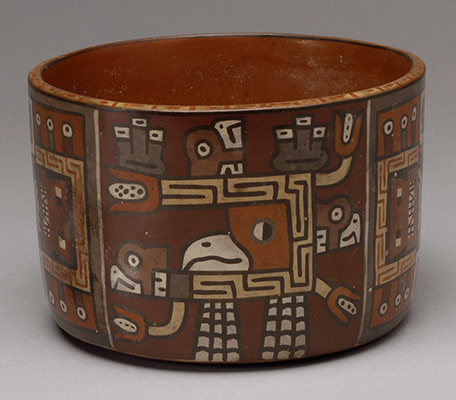
https://www.metmuseum.org/toah/ht/06/sac.html
unquote
a walk...pitching change for the Angels...and, and the Mayans had goblets for their chocolate drink...
quote
Used for a plethora of daily activities, such as the storage of food and beverages, ceramics were also a canvas of commemoration. There were three main types of ceramics used in daily life: bowls, plates, and cylinders.
... ... ...
Archaeological evidence has been found that suggests ceramics were used for industrial purposes. The discovery of highly uniform ceramic cylinders along with tools used in the production of salt indicate that the ceramics were used to mass produce salt from brine.
... ... ...
For example, cylindrical bowls used for cacao drinks often had the plant species Q. guatemalteca depicted on them because that flower was used to enhance the flavor of the cacao drink
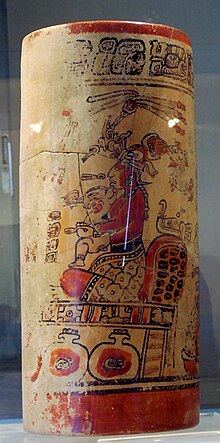
On each ceramic piece near the rim, its contents would be listed out, a type of beverage for a vase or food for a plate, then who it belonged to was written next
https://en.wikipedia.org/wiki/Maya_ceramics
unquote
two on for Jays...Jays made out...to top of eighth...Trout K...Ohtani up...K...Upton waps a home run!...Angels 10-5...Calhoun up...K...to bottom of eighth...two down, and Jays wap a home run...Angels 10-6...a curio:
quote
Athenaeus preserves an ancient description of the kernos as
The kernos was carried in procession at the Eleusinian Mysteries atop the head of a priestess, as can be found depicted in art. A lamp was sometimes placed in the middle of a stationary kernos.

https://en.wikipedia.org/wiki/Kernos
unquote
Kernos for sometime...Jays made out...to top of ninth...Bour up...bloop hit...Lucroy up...Lucroy with two hits on the night--an improvement!...hit by pitch...and, bases loaded!...what?...Fletcher hits into fc, runner at plate out...who led off the ninth?...who follows Calhoun?.;,not Tovar, he's up now...K...two down...Trout up...base hit...Angels 11-6...Ohtani fly out...to bottom of ninth...one down...before this post goes, the Inca holes again...a pic...
quote

https://www.look4ward.co.uk/x-files/nazca-s-band-of-holes-an-overlooked-inca-wonder/
I dunno...Andeans are so different!...so says my enigma algorithm!...oh, there wasn't one down...now there is one down, a runner on...I'm losing it, or Terry...lol...Vlady Jr. up...oh, a W...oh, finish this one up!..I haven't eaten yet...the holes have a 'morphic' look...just lots of circles together...a tile...a lookalike to polygonal honey combs...two down...one more out to go...K...'and you can put a halo over this one'...
quote

https://www.louvre.fr/en/routes/great-goddess
unquote
that must be another cosmetic box cover, like the one up above a ways...note the vase!...Angels 11-6...
:)
DavidDavid
... ... ...
In 2015, archaeologists from UCLA made a brief visit to the site, using photography from drone aircraft to create a detailed map. They speculate that the holes could have been used to measure produce given to the Inca state as tribute; the measurements might have been recorded on Incan khipus and reported to government officials. The archaeologists hope to do further studies to detect pollen or phytoliths that could tend to confirm this hypothesis.
https://en.wikipedia.org/wiki/Band_of_Holes
unquote
oh, there it is, the bit about tribute...and that bit, 'detect pollen' was a step...Lastella up...top of sixth...score still Angels 7-5...archaeologists are doing this a lot now, detecting residues...Lastella K...one down...Trout up...long fly out to the warning track...Ohtani up...a hustle double...comebacker to pitcher...
quote
Cerro Baúl (Spanish: Cerro "hill", Spanish: Baúl "trunk" (i.e. a place to store treasured items)) is an ancient political outpost and ceremonial center settlement in Peru established by the pre-Incan empire called the Wari. It was evacuated after a siege by the Inca Empire in about 1475. Cerro Baúl is a terraced mountain, 2000 feet above its surroundings, with a settlement on the cliff tops themselves and in the immediate surroundings. Among other finds are the remnants of a brewery and large buildings that may have been used for ceremonial feasting. There is evidence of damage that has been interpreted as a careful and deliberate destruction, by the city's own people, of several buildings prior to the mesa's being vacated.
... ... ...
Sprinkled throughout this city we find the most common architectural form used by the Wari civilization, which is an enclosed plaza flanked by impressive stone halls. The halls included residences of governors and wealthy citizens, government offices, and beer houses for state-held parties.

https://en.wikipedia.org/wiki/Cerro_Ba%C3%BAl
apparently, the Wari paddled up the hill for one last time, had the usual party, and then threw all their goblets, breaking them, burned the place down, and covered it with sand...and now the archaeologists' finds, studies, the detection of residue plants in the broken cups, are providing ingredients for the micro brewers...who have already farmed the current chica beer drunk by the Andeans...and, and the Wari have like the best goblets!...don't know but the mesa mountain is a lookalike to a modius!...so, back from commercial...top of seventh...Calhoun up...
quote
Temples around the base of Baúl suggest that it was an apu during Wari times, if not earlier.
https://www.pnas.org/content/102/48/17264
unquote
very good page...'apu'?...Calhoun reached first...Fletcher up...
quote
In the religion and mythology of Peru, Ecuador, and Bolivia, apus are the spirits of the mountains - and sometimes solitary rocks and caves, that protect the local people in the highlands. The term dates back to the Inca Empire.
https://en.wikipedia.org/wiki/Apu_(god)
unquote
thought as much...apus are baetyls...and related, I think, to the Polynesian notion of 'akus'...for sometime!...Fletch made out...it's the top of seventh...Bour up...oh, wait...Fletch reached first...and Bour gets on on a chopper misplayed...and, now, bases loaded!...Regnifo up...back to pitcher, and bad throw to second sails into center...oof...poor Jays...Angels 9-5...could have been double play...pitch should have come home...there's only one down...Lastella hits into double play...
quote
https://www.nationalgeographic.com/culture/2019/04/beer-diplomacy-dying-days-wari-empire/
unquote
to bottom of seventh...Bour routine play misses tag at first...Bour has off moments...Vlady Jr. up...wari drinking cup...
quote

https://www.metmuseum.org/toah/ht/06/sac.html
unquote
a walk...pitching change for the Angels...and, and the Mayans had goblets for their chocolate drink...
quote
Used for a plethora of daily activities, such as the storage of food and beverages, ceramics were also a canvas of commemoration. There were three main types of ceramics used in daily life: bowls, plates, and cylinders.
... ... ...
Archaeological evidence has been found that suggests ceramics were used for industrial purposes. The discovery of highly uniform ceramic cylinders along with tools used in the production of salt indicate that the ceramics were used to mass produce salt from brine.
... ... ...
For example, cylindrical bowls used for cacao drinks often had the plant species Q. guatemalteca depicted on them because that flower was used to enhance the flavor of the cacao drink

On each ceramic piece near the rim, its contents would be listed out, a type of beverage for a vase or food for a plate, then who it belonged to was written next
https://en.wikipedia.org/wiki/Maya_ceramics
unquote
two on for Jays...Jays made out...to top of eighth...Trout K...Ohtani up...K...Upton waps a home run!...Angels 10-5...Calhoun up...K...to bottom of eighth...two down, and Jays wap a home run...Angels 10-6...a curio:
quote
Athenaeus preserves an ancient description of the kernos as
| “ | a terracotta vessel with many little bowls stuck on to it. In them there is sage, white poppy heads, wheat, barley, peas (?), vetches (?), pulse, lentils, beans, spelt (?), oats, cakes of compressed fruit, honey, olive oil, wine, milk, and unwashed sheep's wool. When one has carried this vessel, like a liknophoros, he tastes of the contents.[5] | ” |

https://en.wikipedia.org/wiki/Kernos
unquote
Kernos for sometime...Jays made out...to top of ninth...Bour up...bloop hit...Lucroy up...Lucroy with two hits on the night--an improvement!...hit by pitch...and, bases loaded!...what?...Fletcher hits into fc, runner at plate out...who led off the ninth?...who follows Calhoun?.;,not Tovar, he's up now...K...two down...Trout up...base hit...Angels 11-6...Ohtani fly out...to bottom of ninth...one down...before this post goes, the Inca holes again...a pic...
quote

https://www.look4ward.co.uk/x-files/nazca-s-band-of-holes-an-overlooked-inca-wonder/
I dunno...Andeans are so different!...so says my enigma algorithm!...oh, there wasn't one down...now there is one down, a runner on...I'm losing it, or Terry...lol...Vlady Jr. up...oh, a W...oh, finish this one up!..I haven't eaten yet...the holes have a 'morphic' look...just lots of circles together...a tile...a lookalike to polygonal honey combs...two down...one more out to go...K...'and you can put a halo over this one'...
quote

https://www.louvre.fr/en/routes/great-goddess
unquote
that must be another cosmetic box cover, like the one up above a ways...note the vase!...Angels 11-6...
:)
DavidDavid










No comments:
Post a Comment